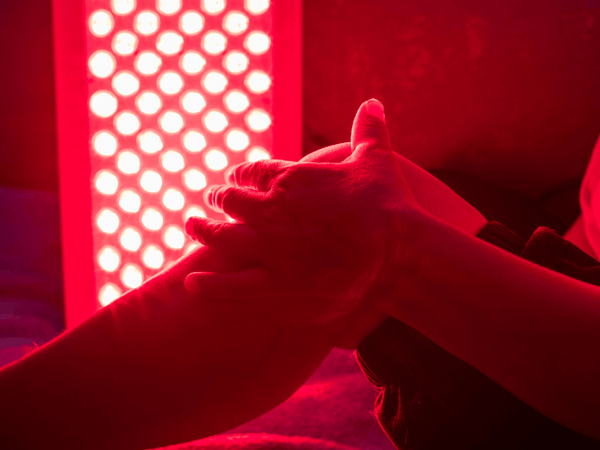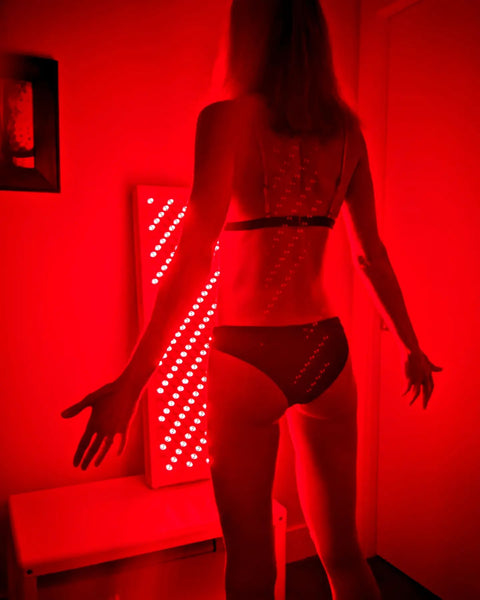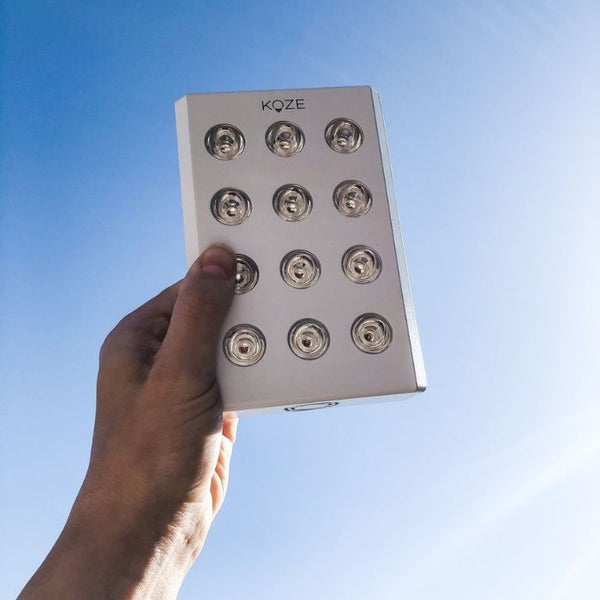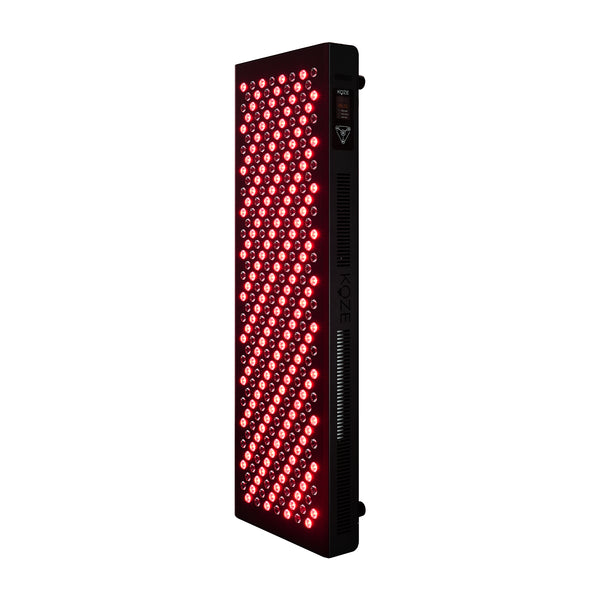
Light Therapy vs. Traditional Treatments: Which is More Effective?
In recent years, the quest for alternative and innovative treatment methods has led to the rise of light therapy as a popular option for various health conditions. As more people seek non-invasive and drug-free solutions, light therapy has emerged as a promising contender against traditional treatments.
This blog post aims to provide an in-depth comparison between light therapy and traditional treatments, exploring their effectiveness, benefits, risks, and overall impact on health. Whether you're considering light therapy for the first time or curious about how it stacks up against conventional methods, this article will guide you through the essential information you need to make an informed decision.
What is light therapy?
Light therapy, also known as phototherapy, is a treatment method that involves exposing the skin or body to specific wavelengths of light to promote healing and wellness. It's a non-invasive approach that harnesses the power of light to trigger biological processes in the body, leading to various therapeutic effects. Light therapy can be administered using lamps, lasers, light-emitting diodes (LEDs), or other light sources, and it's often used to address a wide range of physical and mental health conditions.
Types of Light Therapy
- Red Light Therapy: uses near-infrared light to penetrate the skin and tissues, promoting cell regeneration, reducing inflammation, and improving skin health.
- Blue Light Therapy: Often used to manage acne and other skin conditions, blue light has antibacterial properties and helps regulate oil production in the skin.
- Infrared Therapy: Infrared light penetrates deeper into the body, providing relief for muscle pain, improving circulation, and aiding in injury recovery.
- Ultraviolet (UV) Therapy: Used primarily for skin conditions like psoriasis and vitiligo, UV therapy helps slow down the growth of affected skin cells.
Common Conditions Treated with Light Therapy
- Skin conditions: acne, eczema, psoriasis, vitiligo, and rosacea.
- Mood disorders: seasonal affective disorder (SAD), depression, and anxiety.
- Pain management: Arthritis, muscle pain, joint stiffness, and neuropathic pain.
- Wound healing: Accelerates the healing process of injuries, surgical wounds, and ulcers.
- Sleep disorders help regulate circadian rhythms and improve sleep quality.
Disclaimer: Light therapy's versatility and non-invasive nature make it an attractive option for those seeking alternative treatments. However, it's essential to consult with a healthcare professional before starting any light therapy regimen to ensure its suitability for your specific condition.
KOZE™ Mini:
A portable and adaptable light therapy tool, the KOZE™ Mini brings the advantages of phototherapy straight to your house or place of business. For people looking for a practical way to elevate their mood, improve their sleep, or increase the quality of their skin, this portable gadget is ideal.
The KOZE™ Mini's sleek and simple design allows it to blend in perfectly with any environment, making it the perfect companion for your wellness regimen or for usage while on the road.
Featuring a variety of light settings, it allows you to personalize your therapy session to meet your specific needs, whether it's combating seasonal affective disorder (SAD), reducing acne, or simply unwinding after a long day. Embrace the power of light therapy with the KOZE™ Mini and take the first step towards a brighter, healthier you.
Koze S Series:
A state-of-the-art light treatment system designed to satisfy the changing demands of modern wellness lovers is the Koze S Series. With the many adjustable features of this cutting-edge series, users may tailor their light therapy experience to meet their own wellness and health goals.
The Koze S Series offers powerful therapeutic advantages and adds a sense of elegance to any home or professional setting with its elegant and refined design.
The Koze S Series is an attractive and functional solution for improving your skin tone, mood, or quality of sleep, among other things. With the Koze S Series, embrace the light therapy of the future and achieve unprecedented levels of well-being.
Koze X Series:
For those looking for the pinnacle of wellness innovation, the Koze X Series offers an unparalleled experience as the pinnacle of light therapy technology. This high-end series offers a comprehensive solution for a variety of health and wellness demands by fusing cutting-edge design with sophisticated functions.
With its potent and adaptable light settings, the Koze X Series is made to address certain issues, including stress alleviation, better sleep, and better skin health.
It is a remarkable addition to any home or business setting because of its intuitive UI and sleek, modern design. The Koze X Series offers a smart and practical way to improve your general well-being and adopt a healthier lifestyle, regardless of your level of experience with light therapy.
Traditional Treatments: An Overview

Traditional treatments refer to conventional medical practices and therapies that have been widely used and accepted in the healthcare system for decades. These treatments often involve pharmaceutical medications, surgeries, and other medical interventions that aim to alleviate symptoms, cure diseases, or manage chronic conditions. Traditional treatments are typically based on extensive research, clinical trials, and regulatory approvals, ensuring their safety and efficacy for public use.
Examples of Traditional Treatments
- Medications: prescription drugs, over-the-counter medicines, and antibiotics are used to treat various illnesses and symptoms.
- Surgery: invasive procedures to remove or repair damaged tissues, organs, or structures in the body.
- Chemotherapy and radiation: common cancer treatments that use drugs or high-energy radiation to kill cancer cells.
- Physical therapy is a rehabilitative treatment that uses exercises and equipment to improve mobility, strength, and function.
- Psychotherapy: mental health treatment involving counseling and therapy techniques to address emotional and psychological issues.
Common Conditions Treated with Traditional Methods
- Chronic diseases: diabetes, hypertension, heart disease, and asthma.
- Infections: bacterial, viral, and fungal infections treated with antibiotics, antivirals, and antifungals.
- Mental Health Disorders: Depression, anxiety, bipolar disorder, and schizophrenia.
- Injuries and Trauma: Fractures, Sprains, and Post-Surgical Recovery.
- Cancer: Various forms of cancer are treated with chemotherapy, radiation, and surgery.
Disclaimer: Traditional treatments have a long history of providing effective solutions for a wide range of health issues. However, they may come with side effects, risks, and limitations, leading some individuals to explore alternative options like light therapy.
How does light therapy work?

Light therapy works on the principle that certain wavelengths of light can have therapeutic effects on the body. When the skin or body is exposed to specific types of light, it can trigger cellular and biochemical processes that promote healing and wellness. The effectiveness of light therapy depends on the wavelength, intensity, duration, and timing of the light exposure.
Scientific Principles Behind Light Therapy
- Photobiomodulation: This is the primary mechanism behind light therapy, especially for red and near-infrared light. It involves the absorption of light by cellular components, leading to increased production of adenosine triphosphate (ATP), which is the energy currency of cells. This process enhances cellular metabolism and promotes tissue repair and regeneration.
- Circadian Rhythm Regulation: Exposure to bright light, particularly in the morning, can help regulate the body's internal clock. This is particularly beneficial for treating sleep disorders and mood disorders like seasonal affective disorder (SAD).
- Anti-inflammatory Effects: Certain wavelengths of light can reduce inflammation by inhibiting the production of pro-inflammatory cytokines and promoting anti-inflammatory responses.
Biological Effects of Light Therapy on the Body
- Improved Skin Health: Light therapy can stimulate collagen production, reduce inflammation, and accelerate wound healing, leading to healthier skin.
- Pain Reduction: By reducing inflammation and increasing circulation, light therapy can alleviate pain in conditions like arthritis and muscle soreness.
- Mood Enhancement: Bright light exposure can increase serotonin levels, improving mood and reducing symptoms of depression and anxiety.
- Enhanced Sleep Quality: Regulating the circadian rhythm with light therapy can improve sleep patterns and treat insomnia.
Comparison with the Mechanisms of Traditional Treatments
- Traditional medications often work by interacting with specific receptors or enzymes in the body to alter physiological processes. For example, pain relievers like ibuprofen reduce inflammation by inhibiting enzymes involved in the inflammatory response.
- Surgeries and physical therapies target specific anatomical structures to repair or improve their function, such as realigning a fractured bone or strengthening weakened muscles.
- Chemotherapy and radiation target rapidly dividing cells, which is a different approach from light therapy's cellular stimulation and regeneration.
Benefits of Light Therapy
Light therapy offers several advantages for treating various health conditions, making it a popular alternative or complementary treatment option. Here are some of the key benefits:
Advantages of Using Light Therapy for Various Conditions

- Non-Invasive: Light therapy is a non-invasive treatment that does not require surgery or injections, making it a less intimidating option for many people.
- Drug-Free: It provides a drug-free alternative for those who prefer to avoid medications or are concerned about potential side effects.
- Pain Relief: Light therapy can help reduce pain and inflammation in conditions like arthritis, muscle strains, and neuropathy.
- Skin Health: It promotes collagen production and accelerates wound healing, making it beneficial for treating acne, eczema, psoriasis, and aging skin.
- Mood Improvement: Exposure to bright light can enhance mood and alleviate symptoms of depression and seasonal affective disorder (SAD).
- Circadian Rhythm Regulation: Light therapy can help regulate sleep patterns, improve sleep quality, and manage sleep disorders.
- Convenience: Many light therapy devices are portable and can be used at home, offering a convenient treatment option.
Comparison with the Benefits of Traditional Treatments
- Medications: While traditional medications can be effective in treating various conditions, they often come with the risk of side effects and may not be suitable for everyone. Light therapy provides a non-pharmacological alternative.
- Surgery: Surgical procedures can be invasive and require recovery time. Light therapy offers a non-invasive option that does not require downtime.
- Physical Therapy: While physical therapy is beneficial for rehabilitation, light therapy can complement it by reducing pain and inflammation, potentially speeding up the recovery process.
- Psychotherapy: For mood disorders, psychotherapy is a crucial treatment. Light therapy can be used alongside it, particularly for conditions like SAD, to enhance mood and overall well-being.
Effectiveness of Light Therapy vs. Traditional Treatments
The effectiveness of light therapy compared to traditional treatments varies depending on the condition being treated. Several studies and research projects have been conducted to evaluate the comparative effectiveness of these treatment modalities.
Studies and Research Comparing the Two
- Skin Conditions: A meta-analysis of studies on light therapy for acne showed that blue light therapy significantly reduced acne lesions compared to placebo treatments. In contrast, traditional treatments like topical creams and oral antibiotics also effectively treat acne but may have side effects such as skin irritation and antibiotic resistance.
- Mood Disorders: Research comparing light therapy to antidepressant medication for seasonal affective disorder (SAD) found that light therapy was as effective as medication in reducing depressive symptoms. However, light therapy had fewer side effects and a faster onset of action.
- Pain Management: A study on the effectiveness of infrared light therapy for chronic low back pain found significant pain reduction compared to a placebo group. Traditional treatments like non-steroidal anti-inflammatory drugs (NSAIDs) and physical therapy are also effective but may not be suitable for long-term use due to potential side effects.
Conditions Where Light Therapy is More Effective
- Seasonal Affective Disorder (SAD): Light therapy is considered a first-line treatment for SAD due to its effectiveness in regulating circadian rhythms and improving mood with minimal side effects.
- Mild to Moderate Acne: Blue light therapy can effectively reduce acne-causing bacteria and inflammation without the side effects associated with some traditional acne treatments.
- Skin Rejuvenation: Red and infrared light therapy can stimulate collagen production and improve skin elasticity, making it an effective, non-invasive option for skin rejuvenation.
Conditions Where Traditional Treatments are Preferred
- Severe Acne: For severe or cystic acne, traditional treatments like oral isotretinoin or hormonal therapy may be more effective than light therapy.
- Major Depressive Disorder: While light therapy can be beneficial for SAD, traditional treatments like antidepressants and psychotherapy are typically preferred for major depressive disorder.
- Invasive Conditions: For conditions requiring surgical intervention, such as tumors or internal injuries, traditional surgical treatments are necessary.
Risks and Side Effects
While light therapy is generally considered safe, it is not without potential risks and side effects. Understanding these risks is essential for making informed decisions about treatment options.
Potential Risks Associated with Light Therapy

- Eye Strain or Damage: Prolonged exposure to bright light, especially blue light, can cause eye strain or damage. It's important to use light therapy devices according to manufacturer guidelines and under the supervision of a healthcare professional.
- Skin Irritation: Some individuals may experience redness, itching, or mild skin irritation, particularly with UV light therapy used for skin conditions.
- Headaches: Bright light exposure can sometimes trigger headaches or migraines in susceptible individuals.
- Mania in Bipolar Disorder: For those with bipolar disorder, light therapy may trigger manic episodes if not properly monitored.
Side Effects of Traditional Treatments

- Medications: Common side effects include nausea, dizziness, fatigue, and the risk of dependency or addiction with certain drugs.
- Surgery: Risks include infection, bleeding, and complications related to anesthesia.
- Chemotherapy and radiation: These treatments can cause fatigue, nausea, hair loss, and increased susceptibility to infections.
- Physical Therapy: Some patients may experience temporary soreness or discomfort after sessions.
Comparison of Safety Profiles
- Light Therapy vs. Medications: Light therapy offers a drug-free alternative, eliminating the risk of side effects associated with medications. However, it may not be as immediately effective for certain acute conditions.
- Light Therapy vs. Surgery: Being non-invasive, light therapy poses fewer risks compared to surgical procedures, making it a safer option for non-critical conditions.
- Light Therapy vs. Chemotherapy and Radiation: Light therapy is much gentler on the body, with fewer side effects, but it is not a substitute for cancer treatments.
- Light Therapy vs. Physical Therapy: Both are relatively safe, but light therapy may provide additional pain relief and faster healing with fewer side effects.
Cost Analysis
When considering treatment options, cost is a significant factor for many patients. Understanding the financial implications of light therapy compared to traditional treatments can help in making informed decisions. This section delves into the costs associated with each method and the factors influencing their cost-effectiveness.
Comparison of the Costs Associated with Light Therapy and Traditional Treatments
- Initial Investment for Light Therapy: The upfront cost of light therapy devices varies widely, ranging from affordable handheld units to more expensive full-body panels. While there's an initial investment, these devices can be used at home for multiple years, potentially offering savings over time.
- Ongoing Costs of Traditional Treatments: Traditional treatments such as medications, physical therapy sessions, or surgeries often involve recurring costs. Prescriptions need to be refilled, and multiple therapy sessions or follow-up visits to healthcare providers are usually required.
- Insurance Coverage: Many insurance plans cover traditional treatments like medications and surgeries but may not cover light therapy devices. However, some plans might reimburse for light therapy if it's deemed medically necessary, so it's worth investigating with your insurance provider.
Factors Influencing the Cost-Effectiveness of Each Method
Frequency of Use: Light therapy devices, once purchased, can be used daily with no additional cost per session, making them more cost-effective over time for chronic conditions.
- Condition Being Treated: For acute conditions that require a one-time treatment (e.g., surgery for a broken bone), traditional treatments may be more cost-effective. However, for chronic conditions requiring ongoing management (e.g., SAD, acne, pain relief), light therapy could be more economical in the long run.
- Availability of Treatment Options: In some areas, accessing traditional treatments might involve travel costs and time off work, which can add up. In contrast, light therapy can be administered at home.
- Personal Health Insurance: Depending on your health insurance plan, the out-of-pocket costs for traditional treatments can vary significantly. Light therapy devices are usually a one-time purchase, which might not be covered but could eliminate ongoing costs.
Accessibility and Availability
The availability and accessibility of treatment options play crucial roles in determining patient choices. This section explores the availability of light therapy devices and traditional treatments, as well as the accessibility issues that may impact decision-making.
Availability of Light Therapy Devices and Traditional Treatments
- Light Therapy Devices: Light therapy devices, such as lamps, wands, and masks, are widely available for purchase online and in stores. They come in various forms, catering to different needs, such as skin conditions, mood disorders, and pain relief. Some devices are designed for home use, while others are professional-grade equipment used in clinics.
- Traditional Treatments: Traditional treatments, including medications, surgeries, and physical therapy, are typically accessed through healthcare providers. Medications require prescriptions, surgeries are performed in medical facilities, and physical therapy sessions are conducted in clinics or hospitals.
Accessibility Issues and How They Impact Patient Choices
- Cost: The cost of treatment can be a significant barrier to access. While some light therapy devices are affordable, others can be expensive, especially professional-grade equipment. Traditional treatments, particularly surgeries and long-term medications, can also be costly, especially for those without insurance coverage.
- Geographical Location: Accessibility can be affected by geographical location. Urban areas tend to have more clinics and medical facilities offering a range of traditional treatments. In contrast, light therapy devices can be more accessible to those in remote areas, as they can be ordered online and used at home.
- Availability of Specialists: Certain conditions require specialist care, which may not be readily available in all areas. This can limit access to specific traditional treatments, whereas light therapy devices can be used independently of specialist availability.
- Ease of Use: Light therapy devices are generally user-friendly and can be used at the convenience of the patient's home, making them more accessible for those with mobility issues or time constraints.
The comparison between light therapy and traditional treatments reveals that each has its own unique advantages and limitations. Understanding these differences is crucial for patients and healthcare providers when making treatment decisions. Here's a summary of the key findings and recommendations:
Summary of Key Findings on the Effectiveness of Light Therapy vs. Traditional Treatments
- Effectiveness: Light therapy has proven effective for a variety of conditions, particularly skin disorders, mood disorders, and pain management. It offers a non-invasive, drug-free alternative to traditional treatments.
- Benefits: Light therapy provides several advantages, including convenience, minimal side effects, and the ability to use it as a complementary treatment alongside traditional methods.
- Risks and Side Effects: While generally safe, light therapy can have potential risks, such as eye strain and skin irritation. However, these are typically less severe than the side effects associated with certain medications and invasive procedures.
- Cost and Accessibility: Light therapy devices can be a cost-effective option for home use, but initial investment and ongoing maintenance costs should be considered. Accessibility varies based on geographical location and the availability of specialist care.
Recommendations for Patients Considering These Options
- Consult with a Healthcare Professional: Before starting any new treatment, it's essential to consult with a healthcare provider to discuss the suitability of light therapy for your specific condition.
- Consider Personal Needs and Preferences: Evaluate your own needs, preferences, and lifestyle to determine whether light therapy or traditional treatments align better with your goals.
- Research and Education: Stay informed about the latest research and developments in light therapy and traditional treatments to make educated decisions.
Final Thoughts on the Future of Light Therapy and Traditional Treatments in Healthcare
The future of healthcare is likely to see a continued integration of light therapy and traditional treatments. As research advances, we can expect more refined and targeted light therapy devices, as well as a better understanding of how to optimize their use alongside conventional methods. The growing emphasis on personalized medicine and non-invasive treatments suggests that light therapy will play an increasingly significant role in healthcare, offering patients a broader range of options to manage their health and well-being.
In conclusion, both light therapy and traditional treatments have their place in healthcare. The choice between them should be based on a thorough evaluation of their effectiveness, benefits, risks, and suitability for the individual's condition and lifestyle.
FAQ Section
Here are some frequently asked questions (FAQs) about light therapy and traditional treatments to help clarify common concerns and provide additional information:
1. What conditions can be treated with light therapy?
Light therapy is commonly used to treat skin conditions (such as acne, eczema, and psoriasis), mood disorders (such as seasonal affective disorder and depression), pain management (for arthritis, muscle pain), and sleep disorders (by regulating circadian rhythms).
2. Is light therapy safe for everyone?
Light therapy is generally safe, but there are some precautions. People with certain eye conditions, skin sensitivity, or those taking medications that increase photosensitivity should consult a healthcare professional before starting light therapy.
3. How long does it take to see results with light therapy?
The time to see results varies depending on the condition being treated and the individual's response to therapy. Some people may notice improvements within a few days, while others may take several weeks.
4. Can light therapy be used in combination with traditional treatments?
Yes, light therapy can often be used as a complementary treatment alongside traditional methods. However, it's important to discuss this with a healthcare professional to ensure the combination is safe and effective for your specific condition.
5. Are there any side effects of light therapy?
Possible side effects of light therapy include eye strain, headaches, and skin irritation. These are usually mild and temporary. It's important to follow the instructions for your light therapy device and consult a healthcare professional if you experience any adverse effects.
6. How does the cost of light therapy compare to traditional treatments?
The cost of light therapy can vary depending on the device and the duration of treatment. While some light therapy devices are relatively affordable, others can be more expensive. Traditional treatments, such as medications or surgeries, can also vary in cost. It's important to consider both the short-term and long-term costs when evaluating treatment options.
References
Below is a list of references that were used to gather information for this blog post. These sources provide further details on light therapy, traditional treatments, and their comparative effectiveness:
- Avci, P., Gupta, A., Sadasivam, M., Vecchio, D., Pam, Z., Pam, N., & Hamblin, M. R. (2013). Low-level laser (light) therapy (LLLT) in skin: stimulating, healing, and restoring.Seminars in Cutaneous Medicine and Surgery, 32(1), 41-52.
- Golden, R. N., Gaynes, B. N., Ekstrom, R. D., Hamer, R. M., Jacobsen, F. M., Suppes, T., ... & Nemeroff, C. B. (2005). The efficacy of light therapy in the treatment of mood disorders: A review and meta-analysis of the evidence. American Journal of Psychiatry, 162(4), 656-662.
- Hamblin, M. R. (2016). Shining light on the head: photobiomodulation for brain disorders. BBA Clinical, 6, 113-124.
- Mester, E., Spiry, T., Szende, B., & Tota, J. G. (1971). Effect of laser rays on wound healing. American Journal of Surgery, 122(4), 532-535.
- National Institute of Mental Health. (2016). Seasonal Affective Disorder. Retrieved from [https://www.nimh.nih.gov/health/topics/seasonal-affective-disorder]
- Terman, M., & Terman, J. S. (2005). Light therapy for seasonal and nonseasonal depression: Efficacy, protocol, safety, and side effects. CNS Spectrums, 10(8), 647-663.
- Wunsch, A., & Matuschka, K. (2014). A controlled trial to determine the efficacy of red and near-infrared light treatment in patient satisfaction, reduction of fine lines, wrinkles, skin roughness, and intradermal collagen density increase. Photomedicine and Laser Surgery, 32(2), 93-100.



